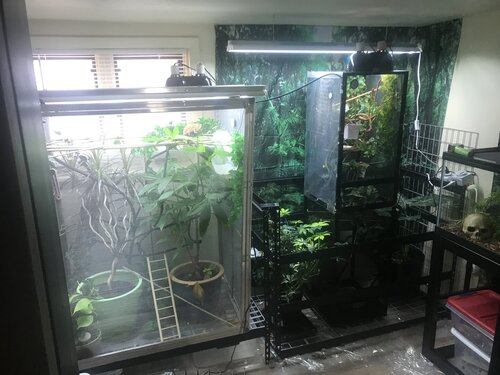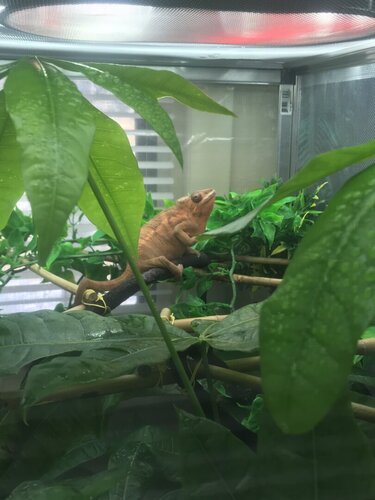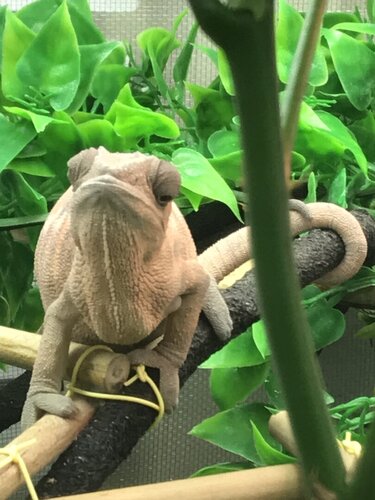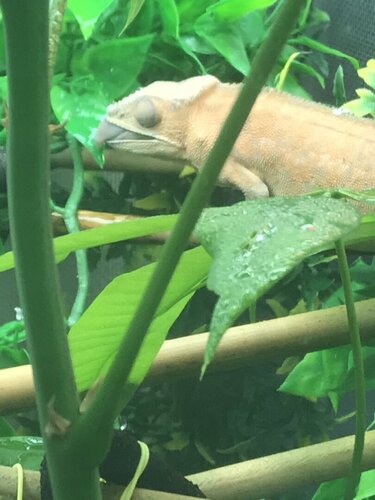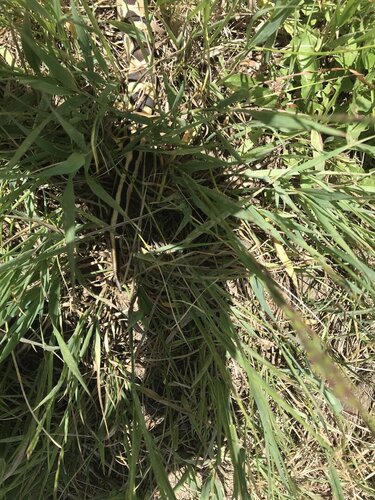mikeb666
New Member
Hi,
I've recently just bought my first Chameleon a Nosey Be Blue Panther. I live in the Uk and im having a massive problem getting the humidity high enough, I've only have the chameleon for 3 days. hes eating well, I've just bought a ultrasonic humidifier and have used a pvc tube so the mist comes out at the top of the cage, this probably has improved the humidity from 25% - 30% to and average of 35 - 40%. I was told that teh cage should be around 70%. I mist the cage a few times a day too this normally brings the cage up by about 10% for a sort while. The cage is a wooden structure 120cm, 70cm, 50cm. and i use mesh for all the sides, and wood for the top and bottom,. For heat and light i use a powersun 160watt bulb at the top of the cage. When i spray the cage the cham will normally go have a drink off some leafs. It normally just sits near the top and is generally a dark brown/green colour,. although when i put my hands it the cage to sort stuff out he normally goes quite light green/blue.
How important is it that the cage is 70%?
Any ideas on how to improve it?
thanks for ur time
Mike
I've recently just bought my first Chameleon a Nosey Be Blue Panther. I live in the Uk and im having a massive problem getting the humidity high enough, I've only have the chameleon for 3 days. hes eating well, I've just bought a ultrasonic humidifier and have used a pvc tube so the mist comes out at the top of the cage, this probably has improved the humidity from 25% - 30% to and average of 35 - 40%. I was told that teh cage should be around 70%. I mist the cage a few times a day too this normally brings the cage up by about 10% for a sort while. The cage is a wooden structure 120cm, 70cm, 50cm. and i use mesh for all the sides, and wood for the top and bottom,. For heat and light i use a powersun 160watt bulb at the top of the cage. When i spray the cage the cham will normally go have a drink off some leafs. It normally just sits near the top and is generally a dark brown/green colour,. although when i put my hands it the cage to sort stuff out he normally goes quite light green/blue.
How important is it that the cage is 70%?
Any ideas on how to improve it?
thanks for ur time
Mike

